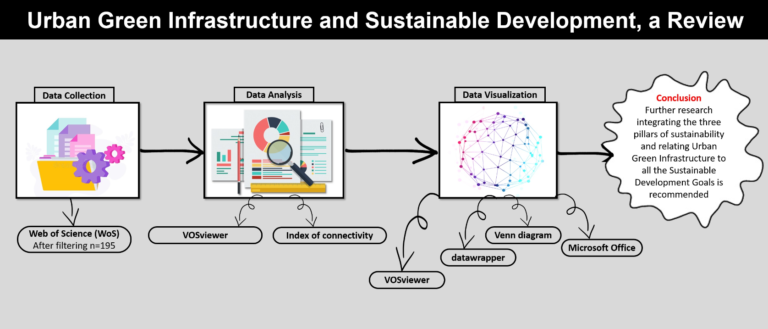Sustainable urban development – strategies for modern cities
With the advancement of globalization and industrialization, the process of urbanization has accelerated rapidly[1]. However, this process has brought multiple challenges such as resource depletion, environmental pollution, and social fragmentation. Sustainable urban development came into being with the aim of finding a way to support urban growth while protecting and enhancing environmental and social resources.
Three Pillars of Sustainable Urban Development
Sustainable urban development is based on three pillars: economic, environmental and social sustainability[2]. This holistic strategy emphasizes balanced development and aims to achieve long-term goals.
- Economic sustainability: Economic growth is the basis for urban development. Sustainable economic strategies aim to promote innovation and competitiveness while ensuring that all community members benefit from them.
- Environmental sustainability: Cities must take steps to protect natural resources, reduce pollution, improve energy efficiency, and implement strict environmental protection policies.
- Social Sustainability: Enhance community cohesion and well-being and ensure equitable access to essential services such as education, health and safety.
Key Strategies
The realization of sustainable urban development relies on a number of key strategies.
- Green infrastructure: Investing in green infrastructure such as public transportation and green buildings not only improves the quality of life for residents, but also helps reduce the environmental footprint.
- Smart City Technologies: Leveraging smart technologies, such as IoT (Internet of Things) devices and smart data analytics, to optimize energy use, transportation and public services.
- Sustainable urban planning: through scientific planning, rationally layout urban space, control urban expansion, protect the ecological environment, and improve land use efficiency.
- Community participation and governance: Encourage citizens to participate in urban planning and enhance transparency and public participation in decision-making.

Image 1: Urban green infrastructure and sustainable development https://www.mdpi.com/2071-1050/13/20/11498#
Precedents
Copenhagen, Denmark
Copenhagen’s success as one of the world’s most sustainable cities lies in its comprehensive strategy, which includes large-scale investments in wind and other renewable energy sources, as well as its extensive network of cycle paths. In addition, Copenhagen is actively promoting green roofs and efficient waste recycling systems, with the goal of becoming the world’s first carbon-neutral capital by 2025[3].

Image2: Copenhagen city https://www.copcap.com/business-services
Bangkok, Thailand
Faced with serious urban pollution and traffic problems, Bangkok has promoted green travel by improving the efficiency of its public transportation system, such as promoting electric buses and taxis. In addition, Bangkok has also made innovations in urban greening and water management systems, such as the establishment of multi-functional green spaces that can be used for public recreation and flood prevention during the rainy season.
Conclusion
Sustainable urban development requires a comprehensive, multi-field strategy that involves policy formulation, technological innovation, and broad social participation. It is not only a problem of technology and economy, but also a problem of culture and social structure. Successful urban sustainable development cases show that only when local governments, businesses, non-governmental organizations and residents can participate together and form synergy can truly sustainable development be achieved.
The future of cities depends on our choices and efforts today. In the long run, only those cities that can achieve a triple balance of economy, environment and society can maintain a leading position in global competition and provide residents with a high-quality living environment.
References
[1] United Nations. World Urbanization Prospects: The 2018 Revision. UN, 2018.
[2] Green, A., et al. Urban planning and sustainable development, European Journal of Sustainable Development, 2016
[3] Copenhagen Capacity. “Copenhagen’s ambitious push to be carbon-neutral by 2025”. [Online] Available at: https://www.copcap.com/set-up-a-business/sustainability
[4] Beatley, T., 2012. Green urbanism: Learning from European cities. Island press..
[5] Newman, P., Beatley, T. and Boyer, H., 2017. Resilient cities: Overcoming fossil fuel dependence. Island Press.
[6] Beatley, T. and Wheeler, S.M. eds., 2004. The sustainable urban development reader. London, UK: Routledge.


